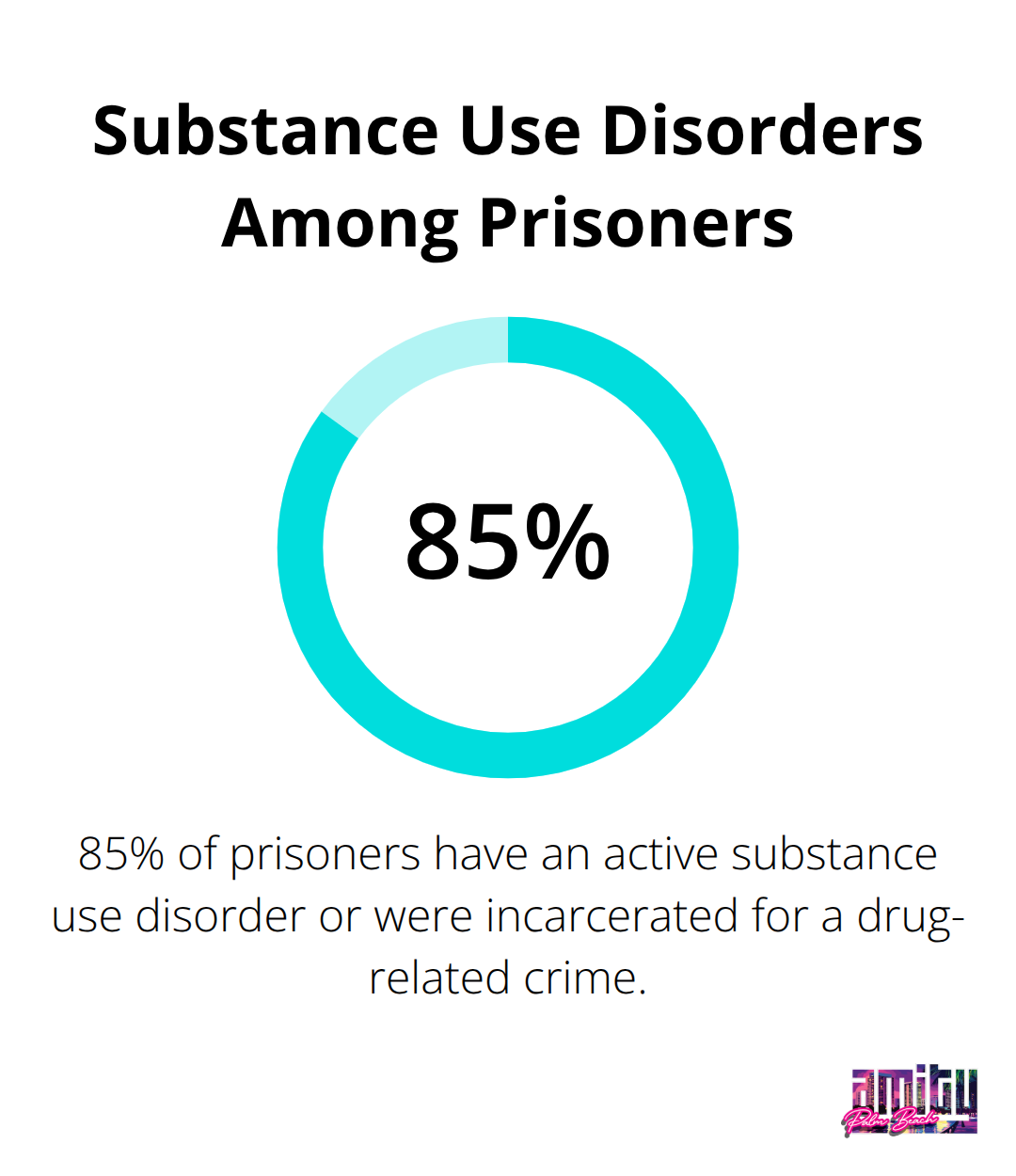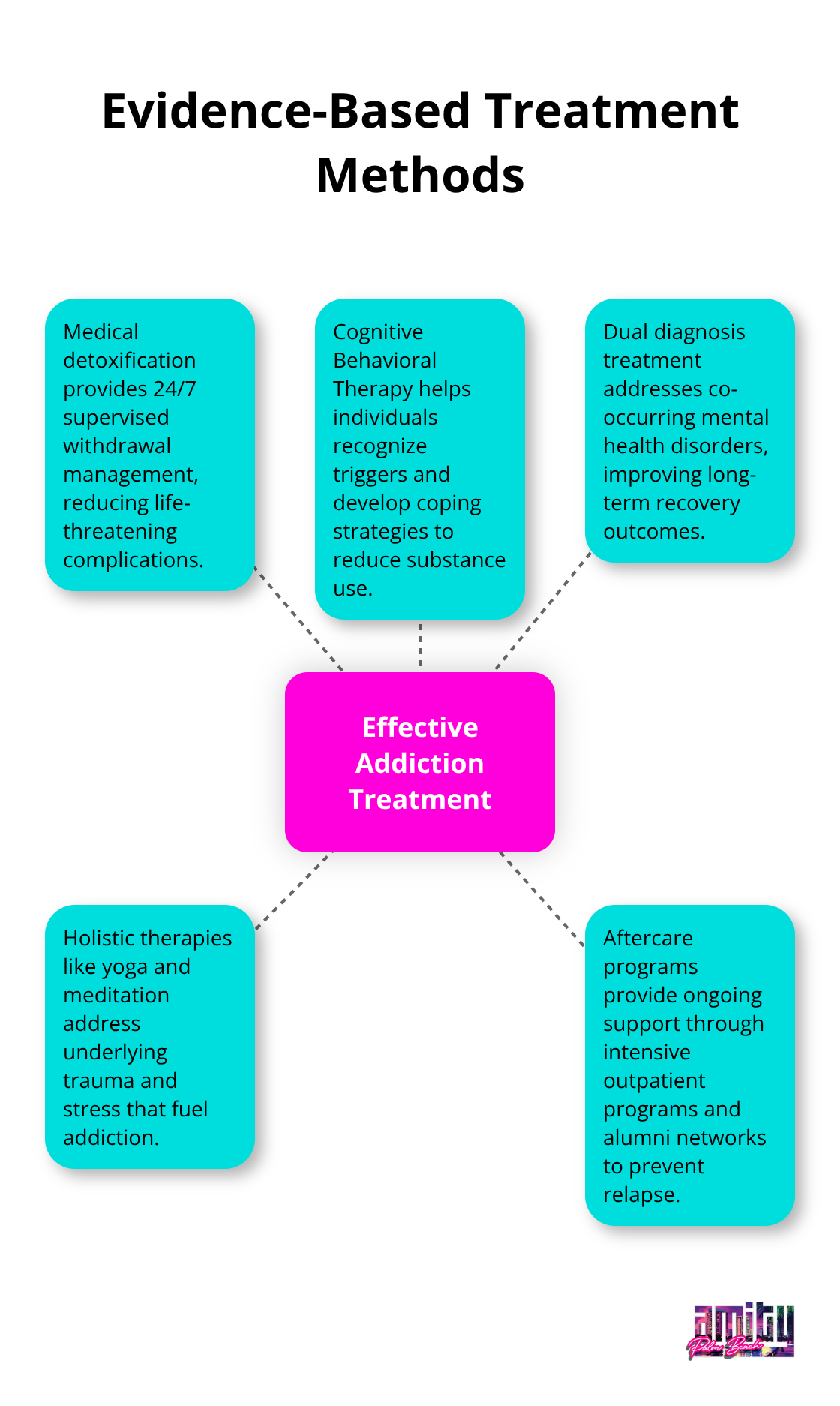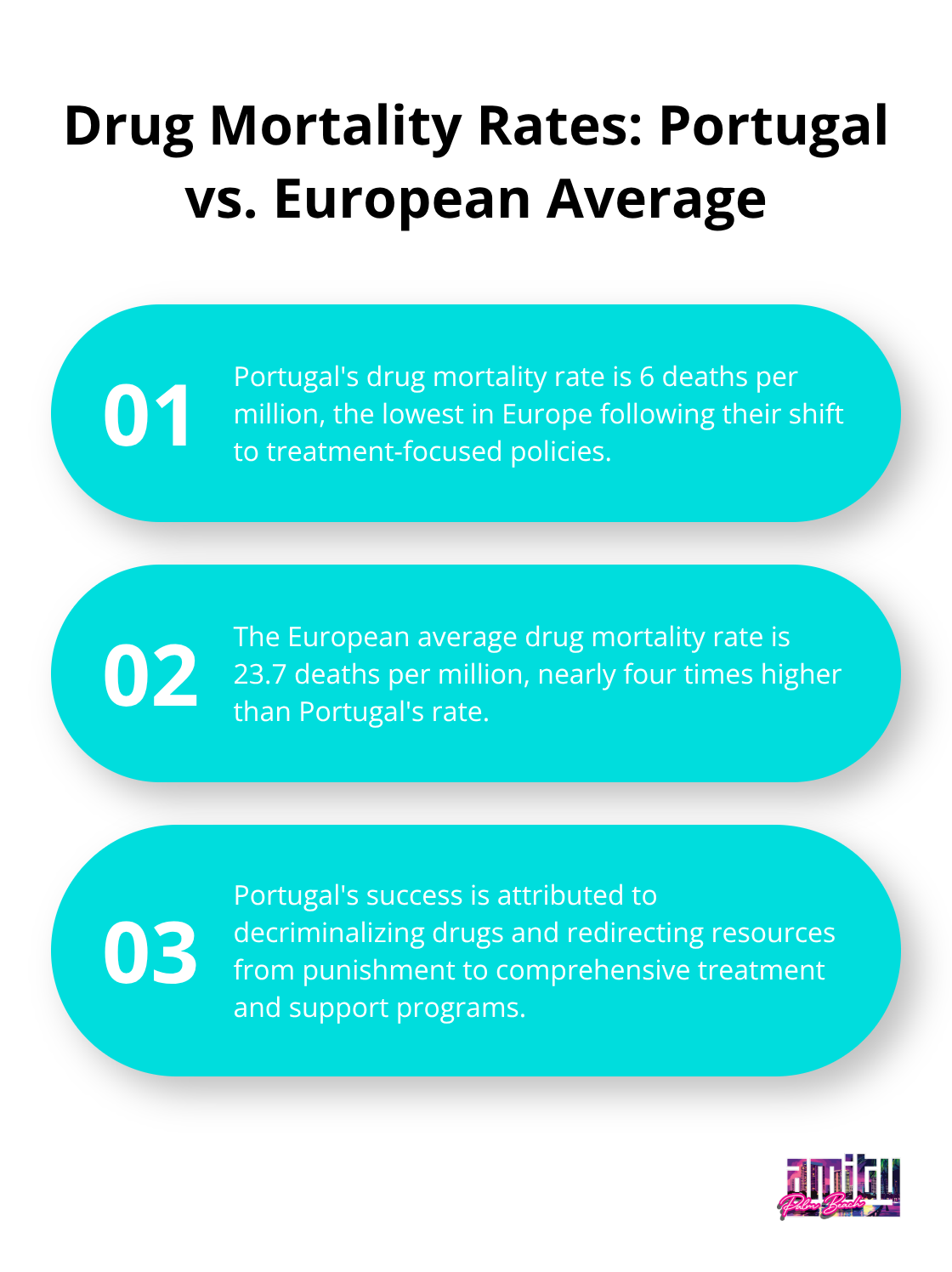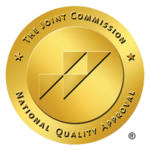The debate over drug rehab vs jail continues to shape criminal justice policy across America. Research consistently shows that treatment programs outperform incarceration in reducing reoffense rates and addressing addiction’s underlying causes.
We at Amity Palm Beach have witnessed firsthand how evidence-based treatment transforms lives where punishment alone fails. The data speaks volumes about rehabilitation’s superior effectiveness.
Why Rehab Beats Jail Every Time
The numbers paint a stark picture of rehabilitation’s superiority over incarceration. The American Public Health Association reports that only 11% of inmates with addiction receive treatment while imprisoned, yet 85% of prisoners have an active substance use disorder or were incarcerated for a crime involving drugs or drug use. This treatment gap explains why traditional punishment fails spectacularly.

When individuals leave jail without treatment for their addiction’s root causes, they return to the same destructive patterns that landed them behind bars initially.
Treatment Tackles the Disease, Not Just the Symptoms
Prison treats addiction as a moral failure rather than a medical condition that requires specialized intervention. Addiction treatment programs address trauma, mental health disorders, and neurobiological changes that drive compulsive drug use. The Mayo Clinic identifies addiction as a brain disease that severely impairs control over substance use, which makes punishment-based approaches fundamentally flawed. Comprehensive treatment includes behavioral therapies like Cognitive Behavioral Therapy, medication-assisted treatment for cravings, and dual diagnosis care for co-occurring mental health conditions.
Recidivism Rates Prove Treatment Works
The data on repeat offenses demolishes any argument for incarceration over rehabilitation. Individuals with high-risk drug use face a 4.2 times higher likelihood of re-imprisonment (according to the Norwegian Offender Mental Health and Addiction study). However, drug courts that emphasize treatment over punishment show that drug offenders participating in drug court programs are less likely to reoffend than similar offenders sentenced to traditional approaches. The Prison Policy Initiative found that 1 in 4 individuals faces arrest again within a year of release from jail, while comprehensive treatment programs achieve significantly better long-term recovery outcomes.
Financial Reality Favors Rehabilitation
The economic argument for treatment over incarceration is overwhelming. The National Drug Intelligence Center estimated drug use costs society $193 billion annually, with much of this burden stemming from repeated criminal justice involvement. Treatment programs cost substantially less than housing inmates, and successful rehabilitation eliminates the revolving door of arrest, prosecution, and imprisonment. Countries that implement harm reduction and treatment-focused policies achieve better public health outcomes while they spend far less on criminal justice enforcement.
These compelling statistics set the stage for examining the specific evidence-based approaches that make rehabilitation so effective compared to traditional incarceration methods.
What Treatment Methods Actually Work
Medical detoxification forms the foundation of effective rehabilitation and provides 24/7 supervised withdrawal management that jail simply cannot offer. The National Institute on Drug Abuse emphasizes that medically supervised detox reduces life-threatening complications and prepares individuals for comprehensive treatment. Medication-assisted treatment follows detox and uses FDA-approved medications like methadone, buprenorphine, and naltrexone to reduce cravings and prevent relapse. Research has shown that these medications can reduce opioid use and other negative health outcomes compared to abstinence-only approaches that many correctional facilities still promote.
Cognitive Behavioral Therapy Rewires Destructive Patterns
Cognitive Behavioral Therapy directly rewires the thought patterns that drive addictive behaviors, something incarceration never addresses. The Journal of the American Medical Association published research that shows CBT reduces substance use by helping individuals recognize triggers and develop coping strategies. This therapeutic approach teaches people to identify negative thought patterns and replace them with healthier responses to stress and triggers.
Dual Diagnosis Treatment Addresses Root Causes
Dual diagnosis treatment tackles co-occurring mental health disorders. An estimated 8.9 million adults in the United States have co-occurring mental health and substance use disorders. Treatment centers integrate psychiatric care with addiction treatment, while jails typically ignore mental health needs entirely. This comprehensive approach explains why individuals who receive dual diagnosis treatment show better long-term recovery outcomes than those who receive addiction treatment alone.

Holistic Therapies Target Trauma and Stress
Evidence-based holistic therapies like yoga, meditation, and art therapy address trauma and stress that fuel addiction relapse. The American Journal of Drug and Alcohol Abuse found that mindfulness-based interventions reduce substance use compared to standard treatment alone. These approaches help individuals process underlying trauma that often drives substance abuse patterns.
Aftercare Programs Sustain Long-Term Recovery
Aftercare programs provide the ongoing support that prevents relapse in individuals who receive no post-treatment follow-up. Intensive outpatient programs, sober living referrals, and alumni networks create the community connections that sustain recovery long-term. These resources remain largely unavailable to former inmates after release, which explains the stark difference in success rates between treatment graduates and those who simply serve time.
The effectiveness of these evidence-based approaches becomes even more compelling when we examine real-world data from countries and programs that have implemented treatment-focused policies over punishment-based systems.
What Real Treatment Programs Actually Achieve
Portugal revolutionized addiction policy in 2001 when it decriminalized all drugs and shifted resources from punishment to treatment. The results speak for themselves: drug-related deaths dropped by 80%, HIV infections among drug users fell by 95%, and drug-related crime decreased by 50%. Portugal now has the lowest drug mortality rate in Europe at just 6 deaths per million compared to the European average of 23.7 deaths per million. This transformation happened because Portugal treats addiction as a public health issue rather than a criminal justice problem.

Instead of jail sentences, Portugal directs people to treatment programs, provides medication-assisted treatment, and offers social reintegration support. The country spends approximately 18% of its drug budget on law enforcement compared to 95% in the United States, yet achieves dramatically better outcomes.
Drug Courts Prove Treatment Outperforms Punishment
Drug courts across America demonstrate that treatment-focused approaches reduce recidivism more effectively than traditional prosecution. The National Institute of Justice found that drug court participants show 13% lower recidivism rates compared to similar offenders processed through regular courts. Over 3,000 drug court programs now operate nationwide, and participants who complete these programs have significantly lower re-arrest rates than those who simply serve jail time. These courts combine judicial supervision with comprehensive treatment services, which creates accountability while they address addiction’s root causes rather than merely punish its symptoms.
Long-Term Recovery Success Rates Favor Comprehensive Treatment
Comprehensive treatment programs achieve substantially higher long-term recovery rates than incarceration alone. The National Institute on Drug Abuse reports that individuals who complete residential treatment programs maintain sobriety at rates of 40-60% after one year, compared to just 13% of those who receive no treatment. Treatment facilities that provide integrated medical care, behavioral therapy, and aftercare support show even better outcomes, with some programs that achieve 70% sobriety rates at 12 months post-treatment. For those seeking professional help, addiction treatment programs offer evidence-based approaches that address both the physical and psychological aspects of substance dependency.
Final Thoughts
The evidence shows that drug rehab vs jail produces dramatically different outcomes for individuals who struggle with addiction. Treatment programs achieve 40-60% sobriety rates at one year compared to just 13% for those who receive no treatment. Portugal’s treatment-focused approach reduced drug deaths by 80% and HIV infections by 95%, while drug courts show 13% lower recidivism rates than traditional prosecution.
These results demand immediate criminal justice reform. Policymakers must redirect funds from incarceration toward evidence-based treatment infrastructure. The current system wastes billions annually as it cycles addicted individuals through jails that provide no medical intervention for their underlying disease (which requires specialized medical care).
We at Amity Palm Beach witness daily how comprehensive treatment transforms lives where punishment fails. Our programs address addiction’s root causes through evidence-based approaches that create lasting recovery rather than temporary incapacitation. Society benefits when we treat addiction as the medical condition it is rather than a moral failure that deserves punishment.




